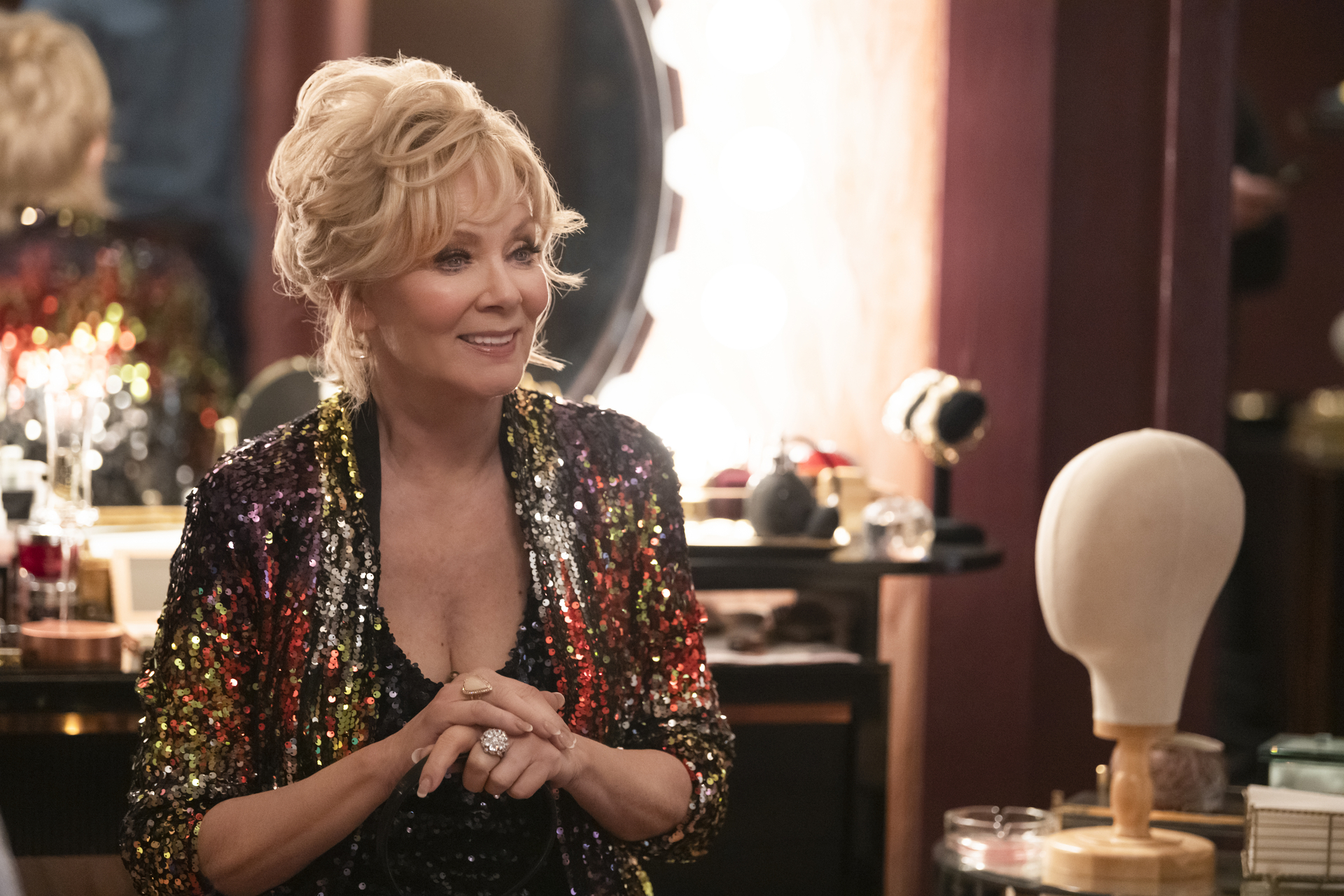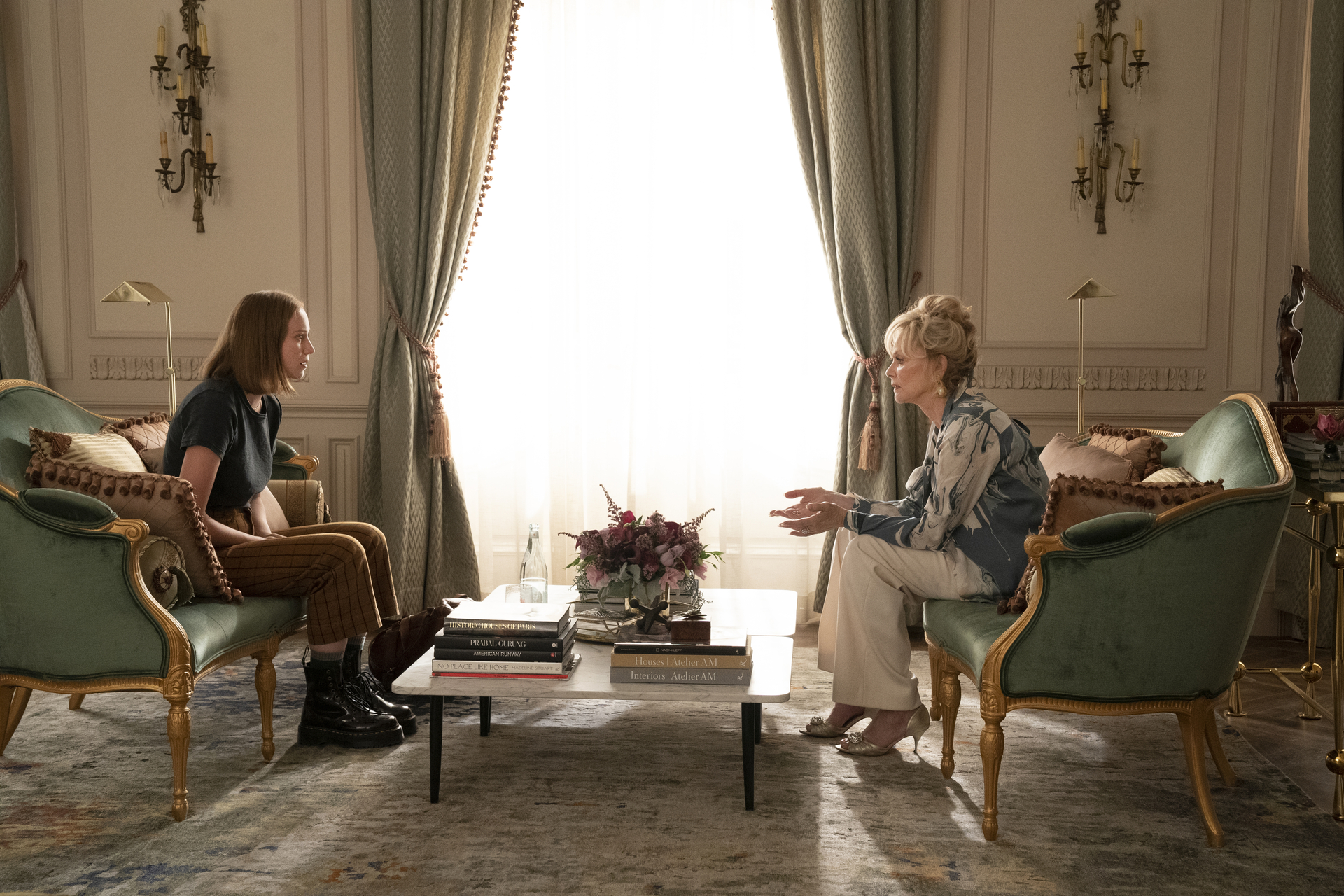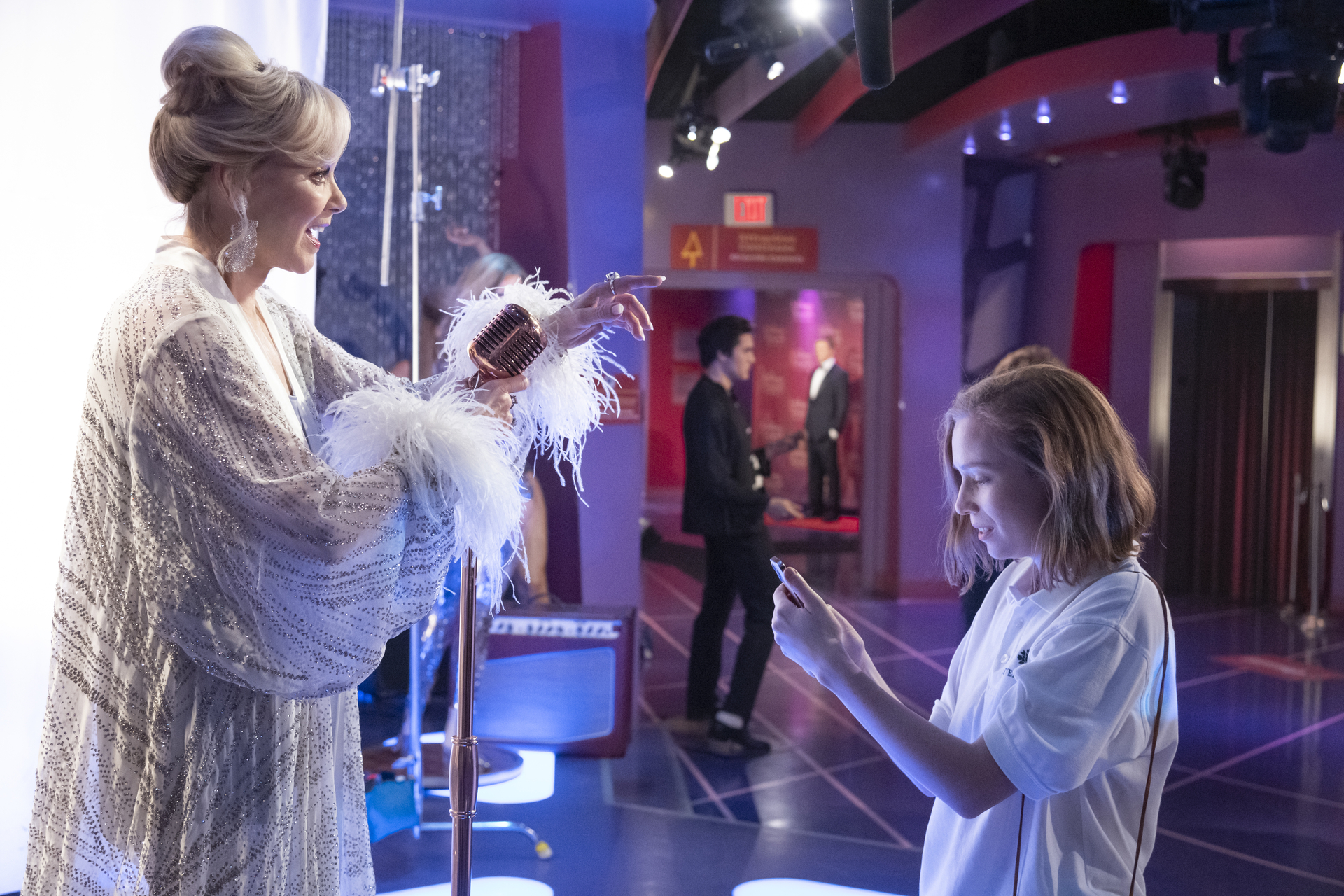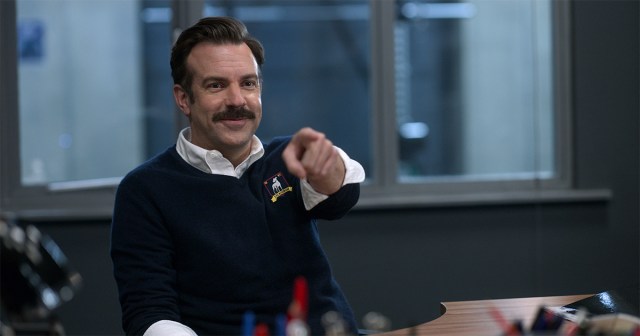
Hacks, from HBO Max, is already a big success for the streamer with 14 Emmy nominations in the locker, including one for editor Jessica Brunetto. The show is essentially a sassy buddy story between two women from different generations of comedy. One trying to out-sass the other.
You have the trailblazing, old-timer comedienne Debra Vance, played by Jean Smart, who ate up the scenery in Mare of Easttown, and the much younger Ava played by first-time actor Hannah Einbinder. If you haven’t seen it, prepare yourself for a twist on the mother/daughter relationship and tropes of kindred spirits and meeting of minds.
Perhaps the most amazing thing about the new show is that it was all shot during the pandemic. The Vegas backdrop is ostensibly Soderbergh’s and not one that was in hiding; an amazing sleight of hand in itself. The result is a beautifully shot 10-episode series, full of laugh-out-loud one-liners and a heart that grows around the two women leads.
The creators and showrunners wanted trauma and comedy in equal measure with plenty of room for improv, but not too much room for extended scenes. That meant a huge challenge for the editing team.
Brunetto cut the show’s pilot episode and also three of the nine other episodes. Below The Line asked her about her journey to editing Hacks.
“I worked with showrunners and co-creators Lucia Aniello and Paul W. Downs on a limited series they created with Ilana Glazer called Time-Travelling Bong. That led me to start working on Broad City, which Lucia and Paul were also a part of. And then Lucia and I also worked on Awkwafina’s Nora from Queens together, and we cut that pilot together — she directed it. So, when Hacks came along, I was, luckily, their first call and honored to be their first call.

“I think Lucia and I are perfectionists, in our own ways, and so I think that we are very comfortable and trusting of each other to, one, feel free to try crazy ideas, but, two, know that we want to have things super-polished and pitch-perfect, as they say.”
READ MORE: Emmy Watch: Hacks Editor Jessica Brunetto on Crafting HBO’s Breakout Comedy (Below The Line)
Shooting started last November, and as soon as production commenced so did the editing. As the final Las Vegas unit didn’t happen until April 2021, the pilot had a long gestation period.
“I was cutting the bulk of Episode 101 and 103 at the same time, because they were all in the first block. And then, I got a bit of a break when they went into block two, those episodes were assigned to the other two editors, and then I had Episode Six come along, and then Episode Nine at the very end.
“There were constant schedule changes throughout, because of COVID. But we were just on our toes, ready to pivot, depending on what they were shooting.”
“That’s always like a really big victory for editors, if they can really elevate scenes or create moments that aren’t even scripted, but that really end up being the best choices.”
— Jessica Brunetto
To keep the beats of the show as consistent as possible, Brunetto kept an eye on how the other episodes that she wasn’t cutting were going.
“I think it’s just really important that the whole season feels cohesive. Especially when you’re still working on the pilot, as the rest of the other nine episodes are evolving. It should inform each other. It shouldn’t just be a one-way street, where the pilot is the Bible, and everything done in the pilot should dictate the other episodes.
“Our score was also constantly evolving, so then I could return to the pilot and be like, ‘Oh, maybe this is better’ or ‘Maybe we should look at Jean Smart takes that are a little more like smirky and sassy,’ stuff like that.

“You’re there to execute the showrunners’ vision of what they want the show to be, and that is bigger than just one episode.”
There were three directors in total, but two of the three were showrunners. Having that direct connection with the creators helped Brunetto, especially with the edit. “They already are in charge on set, so they’re getting what they want to get, and it definitely helped us also move quickly through the edit process. We were trying to hit the deadlines for the Emmys, so this show in particular had a very accelerated schedule this season.”
Brunetto’s favorite episode was probably the one that she and her assistant added an extra mini-scene. “There is quite a bit of improv. Sometimes, they would shoot so much, and there would be so much good stuff that actually we would add.
“In Episode 109, for instance, we added an extra mini-scene from leftover footage, because we just were like, ‘Well, this works for story, and it’s funny. Let’s try it.’ It was something I did in my Editors Cut that I co-edited with my longtime assistant, Marissa Mueller.
“She did a great job with me on that episode, and it stuck. That’s always like a really big victory for editors, if they can really elevate scenes or create moments that aren’t even scripted, but that really end up being the best choices.”
There are plenty of plaudits for this great new show, but perhaps this one from Brunetto hits home more than most. “They pulled off a miracle, I’m not gonna lie. They had one of the toughest shoots I’ve heard of in my career. I don’t think the content suffered, and that is an incredible feat.”

Season two of Hacks provided a different terrain for cinematographer Adam Bricker to film in: the Grand Canyon. His work on episode six, “The Click,” earned him a 2022 Emmy nomination for Outstanding Cinematography for a Single-Camera Series (Half-Hour).
In an interview with IndieWire’s Erik Adams and Chris O’Falt, Bricker explains why he opted to use RED’s new V-Raptor digital cinema camera to capture footage for the second season, making Hacks the first major production to employ the camera, which was first introduced in September 2021.
“Where season one of Hacks was set in the grandeur of Deborah Vance’s Las Vegas world, season two finds her getting back to her roots as she workshops a new set in dive bars and comedy clubs across the country,” he said.
“We were trading the cavernous mainstage of Deborah’s headlining show and lavish mansion for cramped back rooms and the tight quarters of a tour bus, which I knew would require some adjustments to our approach,” Bricker continues. “To give ourselves a little more room to work, we downsized our camera body from a DXL2 to the RED V-Raptor. It was exciting and nerve-wracking to be the first major production to shoot on this brand new camera, but the teams at RED and Panavision went above and beyond for us. I couldn’t be happier with the results.”



